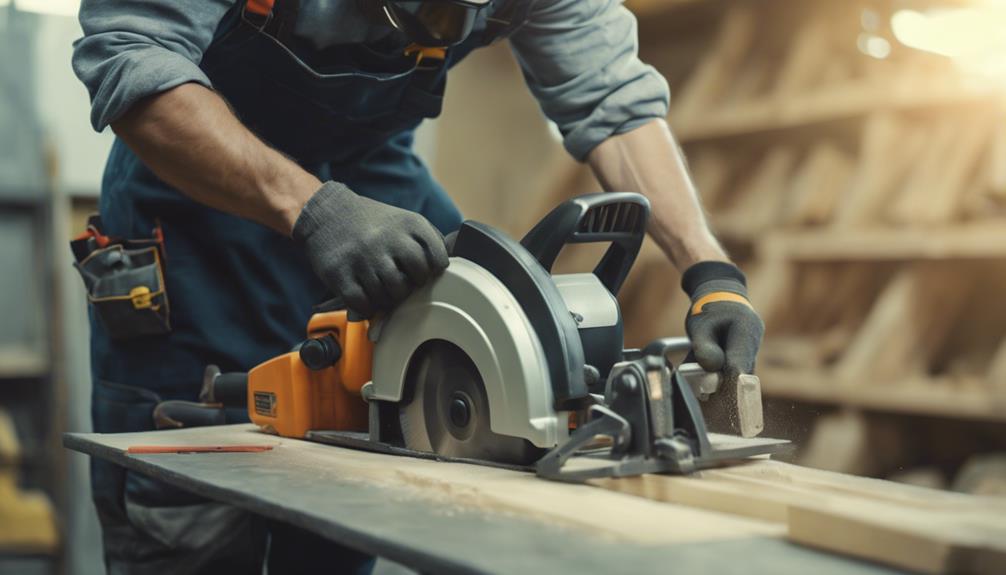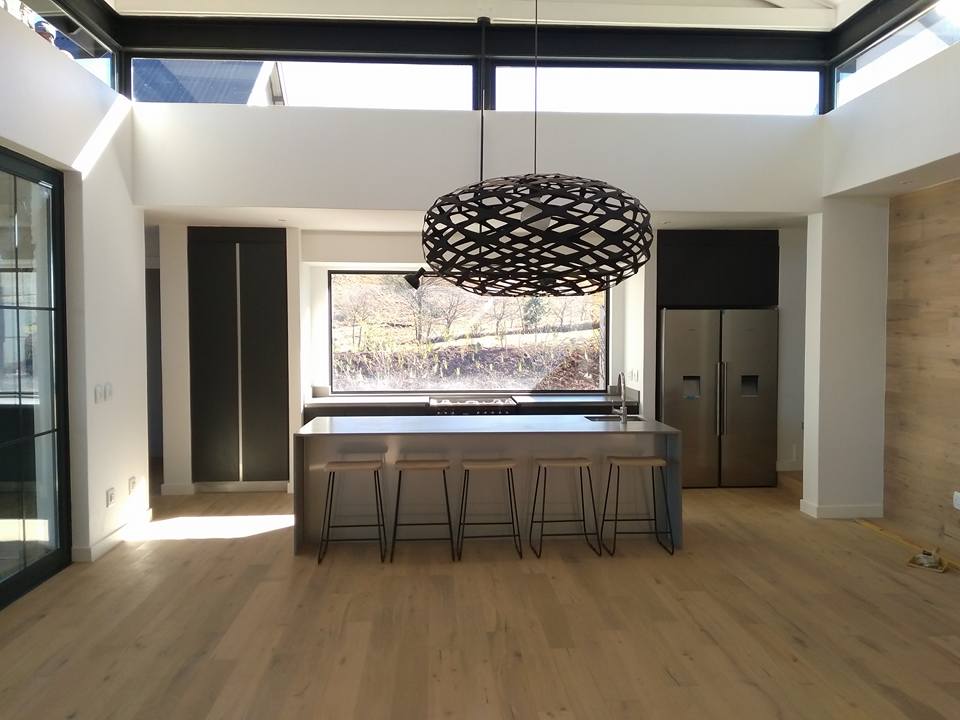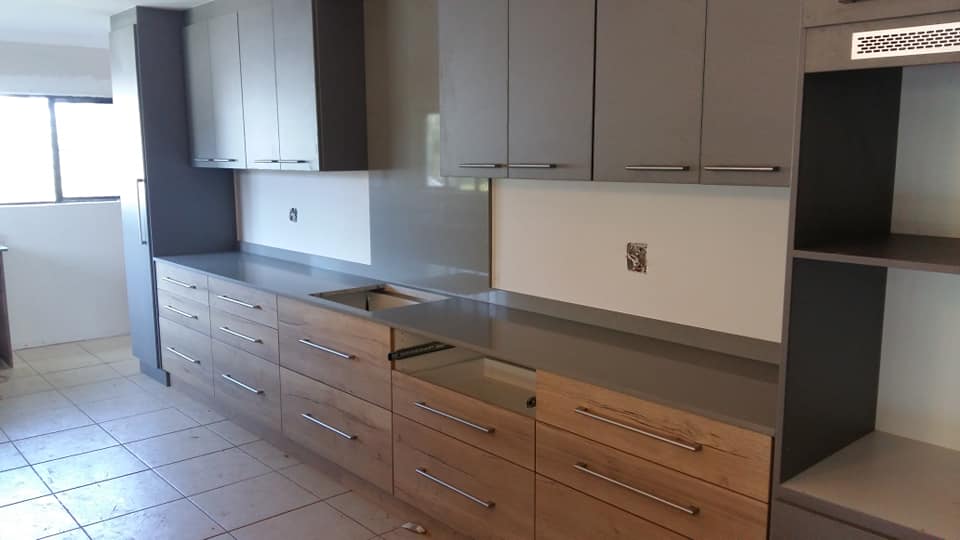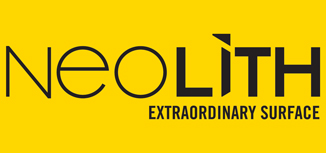In the realm of stone installation projects, prioritising safety is key. Understanding and putting into action the top seven safety practices can significantly influence both the success and the safety of the project. These practices range from proper installation methods to the necessity of effective water management, each playing a vital role in creating a safe working environment.
Exploring these practices offers valuable insights that not only enhance the project's outcome but also protect the health and safety of everyone involved.
Safety Training for Stone Installation
Safety Training for Stone Installation
When it comes to installing stone, knowing the ins and outs of safety isn't just a nice-to-have; it's essential. This is where safety training shines, making sure everyone's up to speed with the rules and regulations from the Occupational Safety and Health Administration (OSHA). It's all about dodging health hazards, especially those nasty silica particles that can do a real number on your lungs. Programs like the Master of Stone by Caesarstone and certifications offered by the Natural Stone Institute are perfect for getting clued up. They walk you through everything – from the OSHA limits on silica dust to why keeping the air clean and using water during work can keep those silica levels down.
Why Safety Can't Take a Backseat
Breathing in silica dust isn't something to take lightly. It can lead to all sorts of health nightmares, including lung infections, silicosis, lung cancer, even kidney disease. That's why getting the lowdown on how to handle and install stone safely is critical. It's not just about ticking boxes for regulations; it's about making sure you're not putting your health on the line. Good safety training gives stone fabricators and installers the tools they need to stay safe and sound.
The Bigger Picture
Investing in top-notch safety training does more than just keep workers out of harm's way. It also boosts the professionalism and success of stone installation projects. Imagine a world where every stone installer knows their stuff, where safety hazards are spotted and stopped in their tracks. That's the kind of professionalism that clients notice and appreciate. So, while it might seem like an extra step, proper safety training is a win-win, ensuring projects run smoothly and everyone goes home healthy.
Personal Protective Equipment (PPE) Guidelines
Ensuring Worker Safety with Proper PPE in Stone Installation
Making sure everyone's safe on a stone installation job isn't just important; it's essential. When we talk about Personal Protective Equipment (PPE), we're looking at the gear that keeps the bad stuff away from our bodies. Let's chat about three key pieces of PPE that are non-negotiable for stone work.
Protective Eyewear for Eyes Safety
First up, we've got safety eyewear. Imagine you're cutting through stone, and a tiny shard flies off. You don't want that hitting your eye, right? That's where safety glasses or goggles come into play. They protect your eyes from dust, debris, and any chemical splashes you might encounter. It's like having a shield for your eyes, keeping them safe while you focus on the task at hand.
Gloves for Hand Protection
Next, let's talk about gloves. Handling stones is no joke; they're sharp, heavy, and not exactly friendly to your skin. Wearing a sturdy pair of gloves can save you from cuts, scrapes, and provide that extra grip you need on your tools. It's like giving your hands a superpower against rough materials.
Steel Toe Boots to Protect Your Feet
Lastly, we can't forget about steel toe boots. Picture this: you're moving a heavy stone, and oops, it slips. You definitely don't want that landing on your foot. Steel toe boots are like your feet's personal bodyguards, ready to take the hit for you. They protect against falling objects, sharp tools, and ensure you walk away from the job site just as nimble as when you entered.
Understanding when and where to use PPE is key. It's not just about having the gear; it's about using it smartly to avoid accidents and keep everyone safe.
Cleanliness Practices on Stone Installation Sites

Maintaining cleanliness on stone installation sites is important for ensuring a safe working environment and minimizing the risk of accidents. Proper debris management is key to preventing tripping hazards and promoting efficiency during the installation process.
Site Cleanliness Importance
Keeping Your Stone Installation Site Spotless and Safe
One of the key steps in making sure your stone installation project goes off without a hitch is keeping the site tidy. Let's talk about why a clean workspace isn't just about looking good – it's about working smart and safe.
Sweep Away the Trouble
Imagine you're walking through the site, and bam! You slip on some dust or debris. Not a great scenario, right? That's why giving the area a good sweep and getting rid of any rubble is crucial. It's not just about avoiding a bit of a tumble; it's about making sure everyone can move around safely without dodging obstacles. Plus, a clean space means you can spot any potential hazards much quicker.
Organisation is Key
Now, let's chat about keeping things in order. When your tools, materials, and equipment are all over the place, it's a recipe for chaos. By organising everything and keeping different items in their own zones, you dodge a whole lot of confusion and potential accidents. Imagine you need a specific tool, and instead of hunting through piles of stuff, you know exactly where it is. That's the kind of efficiency we're aiming for.
Signs and Labels: The Unsung Heroes
Ever walked into a room and forgot why you were there? Happens to the best of us. But on a construction site, that kind of confusion can cause problems. That's where signage and labels come into play. Marking out areas clearly, from hazardous zones to emergency exits, means everyone knows where to go and what to avoid. It's like having a map that guides you through safely and keeps the workflow smooth.
Why This Matters
You might wonder, “Why all the fuss about cleaning and organising?” Well, it's simple. A clean and well-organised site isn't just about making the job easier; it's about making it safer and more efficient. When you know where everything is and you're not dodging debris at every turn, you can focus on the work at hand. And that focus leads to better quality work done quicker. So, next time you're on a site, remember, a little tidying up goes a long way.
Debris Management Tips
Effective Debris Management on Stone Installation Sites
Keeping your stone installation site tidy and safe is more than just a nice-to-have; it's essential. Regularly sweeping away debris not only keeps the site looking good but also wards off potential accidents. Imagine tripping over a piece of rubble—that's exactly the kind of scenario we're trying to avoid.
Choosing the Right Tools for the Job
When it comes to cleaning stone surfaces, grab a soft bristle brush. This isn't just about being gentle; it's about being smart. A softer brush effectively picks up dirt without leaving a single scratch on your beautiful stone surfaces. It's like giving your site a mini spa treatment; it ends up clean, undamaged, and ready to impress.
Why Harsh Chemicals Are a No-Go
Here's the thing about cleaning stone surfaces: harsh chemicals are out of the question. They can do more harm than good, stripping away the stone's natural beauty and potentially causing long-term damage. Think of it as using harsh soap on your face—it's just not recommended. Instead, opt for milder, stone-safe cleaning products that keep everything looking pristine without the risk.
Promoting a Safe and Efficient Work Environment
A clean site is a happy site. By keeping on top of debris and avoiding harmful cleaning agents, we not only prevent accidents but also ensure our stone installations last as long as possible. It's about creating a space where everyone can work efficiently and safely, making the project a success from start to finish. Plus, a well-maintained site is always more pleasant to be around, fostering a positive atmosphere for everyone involved.
Hazard Identification and Accident Prevention
When undertaking stone installation projects, it is important to identify potential hazards like slipping or falling objects to guarantee a safe working environment. Implementing safety measures such as using appropriate personal protective equipment and conducting regular tool inspections can greatly reduce the risk of accidents.
Identify Potential Hazards
In the world of stone installation projects, spotting dangers ahead of time is key to keeping everyone safe and avoiding mishaps. Here's how you can tackle this:
Watch out for falling stones. Imagine you're working away, and suddenly, a loose stone tumbles down from above. Scary, right? That's why it's crucial to keep an eye out for any stones that might decide to make a surprise entrance and pose a danger to the team below.
Next up, let's talk about scaffolding. Before anyone climbs up, we need to make sure it's as sturdy as a rock. Unstable scaffolding isn't just a minor inconvenience; it's a disaster waiting to happen. Checking it over thoroughly can save someone from taking an unwanted tumble.
Lastly, don't forget about the tools and machinery. You know how frustrating it is when your computer crashes in the middle of something important? Well, imagine that, but with stone installation equipment. Regularly checking that everything's in top working order can prevent those annoying and potentially dangerous hiccups.
Implement Safety Measures
Ensuring a Safe Work Environment
To make sure everyone goes home safely at the end of a stone installation job, it's crucial to spot any hazards early on and act to avoid any mishaps. Safety measures are not just about ticking boxes; they involve a detailed plan that starts with teaching the team about the dos and don'ts on-site, making sure everyone's kitted out in the right gear such as hard hats, gloves, and eye protection, and keeping an eye on the work area to nip any dangers in the bud. By weaving these safety practices into the fabric of our work routine, we significantly lower the chances of accidents, creating a safer place for everyone and ensuring the job's done right.
Key Safety Measures Explained
- Hazard Assessments: It's all about being one step ahead. By identifying what could go wrong before it does, we're not just preventing accidents; we're creating an environment where everyone can focus on their craft without worrying about what might happen if things go sideways.
- Employee Training: Knowledge is power, especially when it comes to safety. By ensuring every team member knows how to handle themselves and the equipment safely, we're not just minimising risks; we're building a team that looks out for each other.
- Safety Equipment: The right gear can make all the difference. It's not just about wearing any protective equipment; it's about choosing the best fit for the job. For example, when handling heavy stones, gloves that provide a good grip can prevent slips, while goggles designed for high dust environments keep those peepers safe and sound.
Prevent Accidents Effectively
Keeping Stone Installation Projects Safe
To make sure accidents are kept at bay during stone installation projects, it's crucial to spot hazards early and take steps to avoid them. Here's how you can do just that, in a way that's straightforward and easy to understand.
Carry Out Frequent Hazard Checks
One key way to keep everyone safe is by regularly checking for potential dangers in the stone fabrication and installation process. When you spot risks early, you can sort them out before they become a problem. This isn't just about ticking boxes; it's about making sure every part of the workspace is as safe as it can be.
Follow OSHA's Safety Rules
By sticking to the safety guidelines set out by OSHA, you're making sure that the right safety measures are in place. This reduces the risk of accidents happening. It's not just about compliance; it's about creating a safe working environment where everyone knows how to handle the materials and tools properly.
Offer Comprehensive Safety Training
Teaching your team about safety isn't just about going through the motions. It's about giving them the knowledge and skills they need to recognise dangers and know how to avoid them. This kind of training doesn't just make your team safer; it makes them more confident and efficient in their work.
Why This Matters
When it comes to preventing accidents in stone installation, the key is to be proactive. By carrying out regular hazard assessments, you're always one step ahead. Adhering to OSHA guidelines isn't just about following rules; it's about creating a culture of safety. And when it comes to training, it's about empowering your team, not just instructing them. By taking these steps, you're not just keeping your project on track; you're making sure everyone gets home safely at the end of the day.
Safe Handling of Stone Materials
Ensuring Safety with Stone Materials
Handling stone materials safely is crucial for keeping workers out of harm's way and dodging mishaps during stone fitting tasks. When it comes to shifting hefty stone materials, it's a must to bring in mechanical lifting gear to sidestep injuries. If you've got an awkward or bulky piece of stone, get the team involved for a lift. This way, the weight gets spread out, making it safer for everyone. Wearing sturdy gloves is a game-changer, as it helps you keep a solid grip on the stone and reduce slip-ups. Plus, kitting out in proper back support or a support belt can be a real back saver, keeping strains and injuries at bay when you're moving heavy stones around.
Transporting Stones Safely
Getting stones from A to B without a hitch is all about sticking to safety protocols. This means making sure you've got the right equipment and know-how to keep those stones secure while on the move. By putting safety first and making the most of mechanical aids, team lifts, and protective gear like gloves and back support, workers can cut down on risks. Oh, and don't forget the hard hats for an extra layer of protection while handling those stones.
Proper Tool Usage and Equipment Inspection

Checking Your Tools Before You Start
It's super important to give all your tools a good once-over before you dive into any stone installation work. Why? Well, you want to catch any signs of wear and tear. If you spot any cracks or notice the edges aren't as sharp as they should be, then it's time for a fix or a replacement. This isn't just about making your job easier; it's about keeping things safe and sound for everyone on the project.
Keeping Your Gear in Top Shape
After you've finished using your tools for the day, give them a good clean and stash them somewhere dry. Why bother? Because tools can get rusty or start to break down if they're not looked after properly. And trust me, a tool that's in prime condition is less likely to let you down when you're in the middle of something important.
Using Tools the Right Way
Here's the thing: those manufacturer's instructions that come with your tools aren't just there for decoration. They're packed with useful info on how to use your tools correctly. Sticking to these guidelines helps avoid mishaps and injuries, which is crucial. Plus, knowing exactly how to use each tool means you can work smarter, not harder, keeping everyone safe and speeding up the job.
—
In a nutshell, making sure your tools are in good nick, keeping them well-maintained, and following the rules on how to use them correctly are non-negotiables in the world of natural stone installation. It's all about working efficiently while keeping safety at the forefront. And if you're ever in doubt about which products to use or how to care for your equipment, a quick chat with a professional or a glance at the manufacturer's recommendations can make all the difference.
Regular Safety Meetings for Installers
Regular Check-Ins Boost Safety
After they've double-checked their tools and done all the needed upkeep, stone installers can take a big step towards being safer on the job by having regular catch-ups about safety. It's like getting everyone on the same page about what could go wrong, swapping tips on how to avoid that, and sorting out any worries about safety quickly. Keeping these chats going means everyone's up to speed on how to stay safe, look after their gear, and what to do if things go south. It's a team effort to make sure everyone goes home in one piece at the end of the day. Plus, showing that you're all in for keeping things safe not only looks good—it's proof that you mean business when it comes to looking after your crew.
Working Together for a Safer Workspace
These gatherings are more than just meetings; they're a chance for everyone to chip in and build a place where safety is always front of mind. By talking things through together, you're laying down the groundwork for a culture that values keeping risks low and safety high. It's about making sure that the message gets across: 'We're all in this together, and it's on us to keep each other safe.' And when you put it like that, you're not just following the rules—you're setting a new standard for how things should be done in the stone fabrication game. It's all about sticking to a plan that keeps everyone safe, sound, and ready to tackle the next project with confidence.
Conclusion
Wrapping it all up, it's essential to stick to the seven top safety practices for stone installation projects to ensure everything goes smoothly and safely. Imagine the process like building a castle – you need to lay each stone perfectly, keep the moat clear of blockages, regularly check the walls for any signs of wear, stay away from materials that could crumble easily, and if you're unsure about how to fix a problem, it's always wise to call in the knights who know what they're doing. That's where we, Allstone Solutions, come in. We're here to help you build your castle safely, whether it's through guiding you on the best techniques, helping you manage water effectively, or ensuring your materials stand the test of time.
When you're setting up your project, remember to always wear protective gear, keep your workspace tidy like a well-kept garden, and encourage everyone to talk openly about safety, as if you're all sitting round the round table discussing the next quest. This way, we can create a protective bubble around our team, making sure everyone works in a safe kingdom.
If you find yourself in a tight spot, whether it's deciding on the right granite for your kitchen, choosing the most elegant marble for your entryway, needing intricate designs with CNC Stone Engraving, considering Engineered Stone, or simply looking for the best Installation and Maintenance Info, reach out to us at Allstone Solutions. We're always ready to extend a helping hand or share a piece of advice to make your project a success.
Moreover, should you need a tailored solution, like a suit of armour made just for you, don't hesitate to request a quote from us. We're here to help you carve out the perfect outcome for your project, ensuring it stands tall and proud, just like a castle towers over the land.
In the end, by following these safety practices and reaching out to Allstone Solutions when needed, you can embark on your stone installation journey with confidence, knowing that you're not just building structures, but crafting legacies that will last for generations. Contact Us today for help with Granite Installations, Marble Installations, CNC Stone Engraving, Engineered Stone, or Installation and Maintenance Info, and let's create something magnificent together.

















